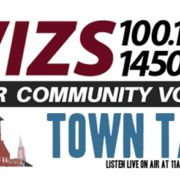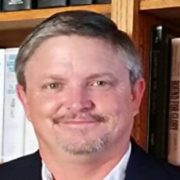TownTalk: The Story Of Drewry
.
ACC basketball fans may know it as the hometown of the 1980’s Duke player David Henderson. History buffs may know it by its earlier name of Enterprise. But anyone who remembers Ripley’s Believe It Or Not! may be able to recall that it is the teeny community of Drewry that, in the 1940’s had an old-fashioned well. Right in the middle of town.
“There was a town well in the middle of the crossroads,” Pace said, which caught Mr. Ripley’s attention. The well remained there until about 1947. “When the state paved the road, they took it up,” he said.
Leave it to local historians Mark Pace and Bill Harris to discuss in detail a community that straddles the present-day Vance/Warren county line.
“Before Kerr Lake came along, you could drive from Townsville to Drewry in seven minutes,” Pace said. Its first name was Cedar Fork, according to Pace, North Carolina Room specialist at Oxford’s Richard Thornton Library. In the 1840’s and 50’s, it was known as Enterprise. But when the Roanoke Valley Railroad came through, it was renamed because it was Drewry Marrow who took care of the railroad there.
By 1881, Drewry held the distinction for being the smallest township in Vance County in terms of size and population, Pace said. It later melded with the Middleburg township.
“There was a time when Drewry was actually a thriving little community,” he noted. “It wasn’t a bustling metropolis,” but there was a café, two barber shops – one for Blacks and one for Whites – a school, butcher shop, school, dry cleaners, fire department and railroad station. It was the halfway point for the railroad, which went back and forth between Manson and Townsville.
In 1940, Drewry was the very first precinct to report results in the Nov. 6 Presidential election. All votes were cast and counted by 8:53. In the morning. The 24 registered voters “all got together and agreed to cast their votes at the same time,” Pace said. “FDR won 100 percent of the votes” cast at Walston’s store in the Drewry precinct.
But folks in and around the Drewry community were interested in politics well before 1940.
A schoolteacher from Virginia named George Sims moved to the area in the 1750’s. He wrote the Nutbush Address, a treatise that pointed out how politicians of the day were abusing their rank and privilege at the expense of the common man. Later, when Samuel Benton (a founding father of Oxford) wrote the Halifax Resolves, there were echoes of Sims’s address. “And the Halifax Resolves was one of the documents that Thomas Jefferson used for a template for the Declaration of Independence,” Pace explained.
“For such a small place, it has an interesting history,” he mused.
Hear the full Around Old Granville segment at wizs.com.
CLICK PLAY!



